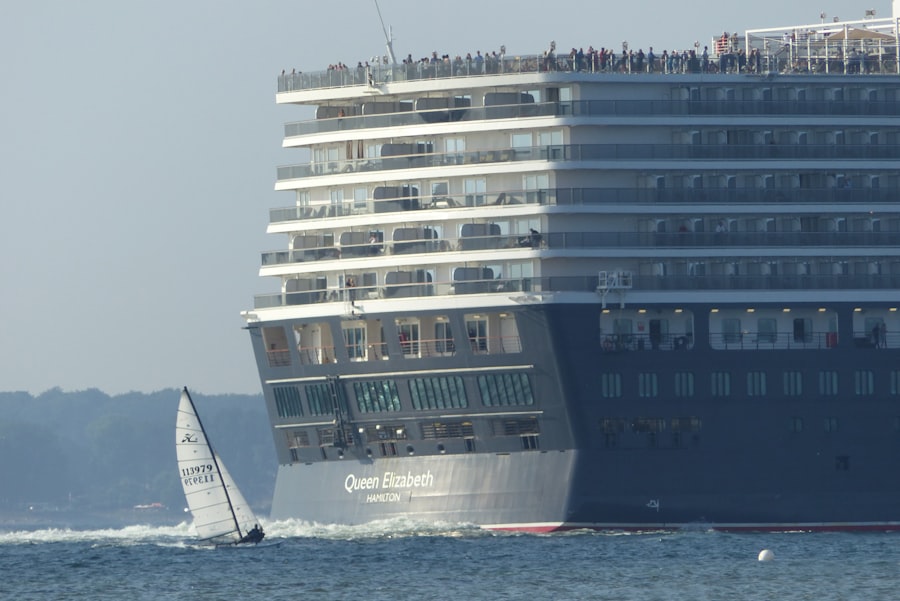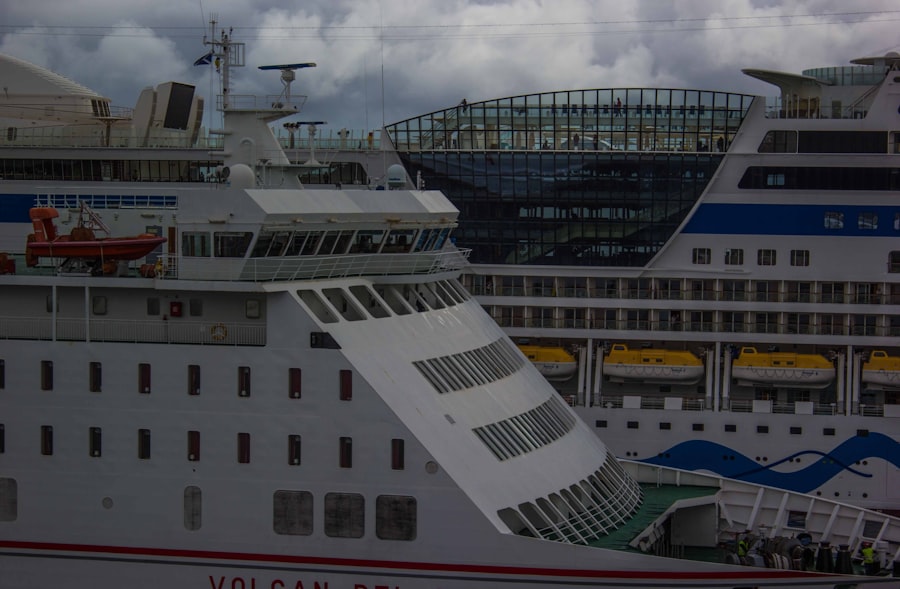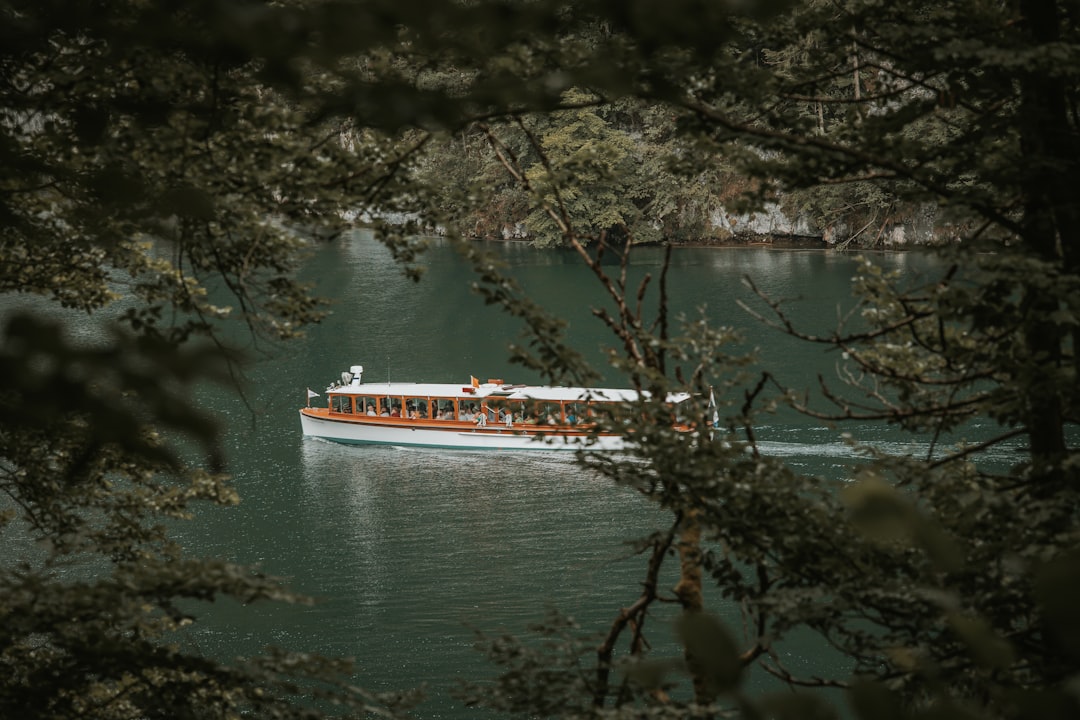The Drake Passage, a body of water that separates South America from Antarctica, serves as a vital conduit for adventurers seeking to explore the icy wonders of the southernmost continent. Stretching approximately 600 miles, this passage is not only a geographical marvel but also a significant ecological zone teeming with marine life. Its turbulent waters, often characterized by unpredictable weather patterns, have earned it a reputation as one of the most challenging maritime routes in the world.
For many, traversing the Drake Passage is the first step in an unforgettable journey to the pristine landscapes and unique wildlife of Antarctica. As travelers embark on their voyages through the Drake Passage, they are often struck by the stark beauty of the surrounding seascape. The deep blue waters contrast sharply with the white-capped waves, creating a dramatic visual experience.
This passage is not merely a means to an end; it is an adventure in itself, offering glimpses of the vast Southern Ocean and the promise of encounters with diverse marine species. For those who dare to navigate its waters, the Drake Passage stands as a gateway to one of the last great wildernesses on Earth.
Key Takeaways
- The Drake Passage is the gateway to Antarctica, known for its challenging waters and stunning scenery.
- When choosing a cruise for the Drake Passage, consider factors such as ship size, itinerary, and onboard amenities.
- Wildlife encounters in the Drake Passage are abundant, with opportunities to see penguins, whales, and seabirds.
- The history and significance of the Drake Passage as a maritime route dates back to the Age of Exploration.
- Navigating the infamous waters of the Drake Passage requires careful planning and experienced crew.
- Activities and excursions on Drake Passage cruises include kayaking, hiking, and visiting research stations.
- When packing for a Drake Passage cruise, essentials include warm clothing, waterproof gear, and camera equipment.
- The unique geology of the Drake Passage includes deep ocean trenches and the meeting of three major ocean currents.
- The best time to visit the Drake Passage is during the Antarctic summer, from November to March.
- Safety and precautions for Drake Passage cruises include seasickness medication and following crew instructions.
- Photography tips for capturing the beauty of the Drake Passage include using a telephoto lens for wildlife shots and capturing the dramatic landscapes.
Choosing the Right Cruise for Your Adventure
Selecting the ideal cruise for a journey through the Drake Passage can be a daunting task, given the plethora of options available. Various cruise lines offer different experiences, ranging from luxurious expeditions to more rugged adventures. Travelers must consider their preferences, budget, and desired level of comfort when making their choice.
Some cruises focus on educational experiences, featuring expert guides who provide insights into the unique ecosystems and history of Antarctica, while others may prioritize adventure activities such as kayaking or ice climbing. In addition to the type of experience offered, potential cruisers should also take into account the size of the vessel. Smaller ships often provide a more intimate atmosphere and allow for easier access to remote areas, while larger vessels may offer more amenities and entertainment options.
Regardless of the choice made, it is essential for travelers to research thoroughly and read reviews to ensure that their selected cruise aligns with their expectations and aspirations for this once-in-a-lifetime journey.
Wildlife Encounters in the Drake Passage

One of the most exhilarating aspects of cruising through the Drake Passage is the opportunity to encounter an array of wildlife that thrives in these frigid waters. The passage is home to numerous species of seabirds, including albatrosses and petrels, which can often be seen gliding gracefully above the waves. These magnificent birds are not only a sight to behold but also play a crucial role in the marine ecosystem, serving as indicators of ocean health.
In addition to avian life, the waters of the Drake Passage are rich with marine mammals. Whales, including humpbacks and orcas, frequently traverse these waters in search of food. Travelers may be fortunate enough to witness these majestic creatures breaching or spouting as they navigate through the passage.
The thrill of spotting wildlife in its natural habitat adds an element of excitement to any cruise, making each journey through the Drake Passage a unique experience filled with unforgettable moments.
The History and Significance of the Drake Passage
| Aspect | Details |
|---|---|
| Location | Between the southern tip of South America and the northern tip of the Antarctic Peninsula |
| Width | Approximately 800 kilometers |
| Depth | Deepest point reaches over 8,000 meters |
| Significance | Important for the circulation of the world’s oceans and the global climate system |
| History | Named after Sir Francis Drake, the first Englishman to navigate the passage in 1578 |
The historical significance of the Drake Passage cannot be overstated. Named after Sir Francis Drake, who navigated these waters in the late 16th century, this passage has long been a critical route for explorers and sailors alike. Its treacherous conditions have challenged even the most skilled mariners throughout history, making it a focal point for maritime exploration and trade.
The passage has served as a gateway for scientific research and discovery, particularly in relation to climate change and its impact on polar regions. Moreover, the Drake Passage holds cultural significance for indigenous peoples and modern explorers alike. It represents not only a physical barrier but also a symbolic threshold between two worlds—the temperate climates of South America and the icy expanse of Antarctica.
As such, it has become a site of fascination for those drawn to adventure and discovery, embodying the spirit of exploration that has defined human history.
Navigating the Infamous Waters of the Drake Passage
Navigating the waters of the Drake Passage is no small feat; its reputation for rough seas and unpredictable weather is well-deserved. The confluence of currents from the Atlantic and Pacific Oceans creates conditions that can shift rapidly, leading to swells that can reach impressive heights. Mariners must be well-prepared and experienced to traverse these waters safely.
Modern vessels are equipped with advanced technology and stabilization systems designed to enhance passenger comfort during turbulent passages. Despite its challenges, many seasoned travelers regard crossing the Drake Passage as an essential rite of passage on their journey to Antarctica. The thrill of navigating these infamous waters adds an element of adventure that few other travel experiences can match.
For those willing to embrace the unpredictability of nature, crossing the Drake Passage becomes a memorable part of their Antarctic expedition.
Activities and Excursions on Drake Passage Cruises

Cruising through the Drake Passage offers more than just breathtaking views; it also presents numerous opportunities for engaging activities and excursions. Many cruise itineraries include guided landings on Antarctic shores, where passengers can step foot on this remote continent and explore its stunning landscapes. These excursions often involve hiking on glaciers or visiting research stations, providing travelers with firsthand insights into life in one of Earth’s most extreme environments.
In addition to land-based activities, many cruises offer opportunities for water-based adventures such as kayaking or zodiac excursions. These smaller vessels allow passengers to get up close and personal with icebergs and marine wildlife while enjoying a unique perspective on Antarctica’s breathtaking scenery. Whether it’s observing seals lounging on ice floes or navigating through narrow channels between towering glaciers, these excursions enhance the overall experience of cruising through the Drake Passage.
What to Pack for a Drake Passage Cruise
Packing for a cruise through the Drake Passage requires careful consideration due to the unique climate and conditions encountered in this region. Travelers should prioritize layering clothing to accommodate fluctuating temperatures throughout the day. Waterproof outer layers are essential for protection against wind and rain, while thermal undergarments provide warmth during chilly excursions.
In addition to clothing, travelers should also pack essential gear such as binoculars for wildlife watching and cameras for capturing stunning landscapes.
A good pair of waterproof boots is also recommended for landings on wet or icy terrain.
By preparing adequately, travelers can ensure they are comfortable and ready for any adventure that awaits them in the Drake Passage.
The Unique Geology of the Drake Passage
The geology of the Drake Passage is as fascinating as its history and wildlife.
The South American Plate meets the Scotia Plate here, creating a dynamic environment that has shaped both landforms and oceanic features over millions of years.
The underwater topography includes deep trenches and ridges that contribute to its complex ecosystem. The geological history of the Drake Passage also provides insights into past climate changes and ocean currents that have influenced global weather patterns. Researchers study sediment cores from this area to understand how climate has shifted over time, offering valuable data that informs current climate models.
The geological significance of this passage extends beyond its physical characteristics; it plays a crucial role in understanding Earth’s past and present environmental conditions.
The Best Time to Visit the Drake Passage
Timing is crucial when planning a visit to the Drake Passage, as seasonal variations significantly impact weather conditions and wildlife activity. The austral summer months from November to March are considered peak season for Antarctic cruises, offering milder temperatures and longer daylight hours. During this period, travelers can expect more stable weather conditions, making crossings through the Drake Passage more manageable.
Wildlife activity also peaks during these months, with many species breeding or migrating through these waters. Passengers are likely to witness penguin chicks hatching or whales feeding in preparation for their long migrations. For those seeking optimal wildlife encounters and favorable weather conditions, planning a trip during this window will enhance their overall experience in this remarkable region.
Safety and Precautions for Drake Passage Cruises
Safety is paramount when embarking on a cruise through the Drake Passage due to its unpredictable nature. Cruise operators prioritize passenger safety by adhering to strict protocols and guidelines designed to mitigate risks associated with rough seas and inclement weather. Vessels are equipped with advanced navigation systems and safety equipment to ensure safe passage through challenging conditions.
Travelers are also encouraged to familiarize themselves with safety procedures before embarking on their journey. This includes attending safety briefings provided by crew members upon boarding. Understanding how to respond in case of emergencies or adverse weather conditions can significantly enhance passenger safety during their voyage through this iconic passage.
Capturing the Beauty of the Drake Passage: Photography Tips
For many travelers, capturing the stunning beauty of the Drake Passage is an essential part of their journey. To make the most of photography opportunities in this breathtaking region, several tips can enhance one’s photographic experience. First and foremost, investing in a good quality camera with a zoom lens will allow photographers to capture distant wildlife without disturbing them.
Additionally, understanding lighting conditions is crucial when photographing landscapes or wildlife in varying weather conditions. Early morning or late afternoon light often provides softer tones that enhance natural beauty. It’s also advisable to bring extra batteries and memory cards since cold temperatures can drain battery life quickly.
By being prepared and mindful of their surroundings, photographers can create lasting memories that reflect the awe-inspiring beauty of the Drake Passage. In conclusion, traversing the Drake Passage offers an unparalleled adventure filled with breathtaking landscapes, unique wildlife encounters, and rich historical significance. With careful planning and preparation, travelers can embark on an unforgettable journey that not only leads them to Antarctica but also immerses them in one of nature’s most remarkable environments.
If you’re planning a cruise through the Drake Passage, you might find it interesting to explore related travel experiences and tips. A great resource for adventure enthusiasts is the article on MyGeoQuest, which provides insights into various travel destinations and activities. This article can offer valuable information to enhance your journey through one of the most challenging and exhilarating sea routes in the world.
WATCH NOW! Drake Passage: Earth’s Deadliest Waters Revealed
FAQs
What are Drake Passage cruises?
Drake Passage cruises are expeditions that traverse the treacherous waters of the Drake Passage, which lies between the southern tip of South America and the northern tip of the Antarctic Peninsula. These cruises offer passengers the opportunity to experience the unique and remote landscapes of Antarctica and the surrounding islands.
What can I expect to see on a Drake Passage cruise?
Passengers on a Drake Passage cruise can expect to see a variety of wildlife, including penguins, seals, whales, and seabirds. The landscape is characterized by towering icebergs, glaciers, and snow-covered mountains, providing a stunning backdrop for photography and exploration.
What is the best time of year for a Drake Passage cruise?
The best time to take a Drake Passage cruise is during the Antarctic summer, which runs from November to March. During this time, the weather is milder, and wildlife is more active, providing the best opportunities for wildlife viewing and exploration.
What should I pack for a Drake Passage cruise?
Passengers should pack warm, waterproof clothing, including insulated jackets, pants, gloves, and hats, as well as sturdy, waterproof boots for shore excursions. It is also recommended to bring binoculars, a camera, and any necessary medications.
Are Drake Passage cruises suitable for everyone?
Drake Passage cruises can be physically demanding, as they often involve navigating rough seas and participating in shore excursions that require a reasonable level of fitness. Passengers should be prepared for potential seasickness and be able to navigate uneven terrain during landings. It is advisable to consult with the cruise operator to ensure the trip is suitable for individual needs.
